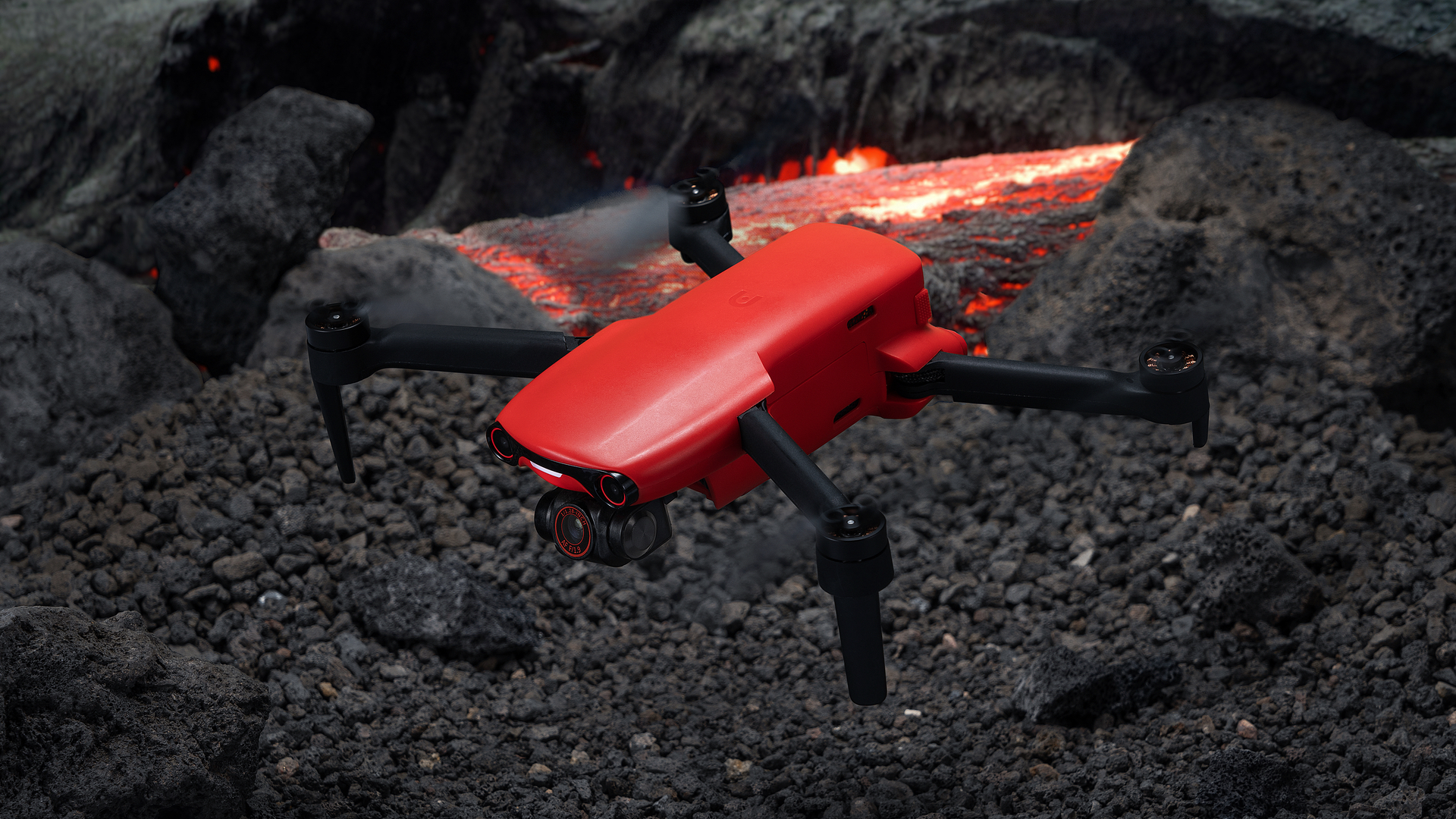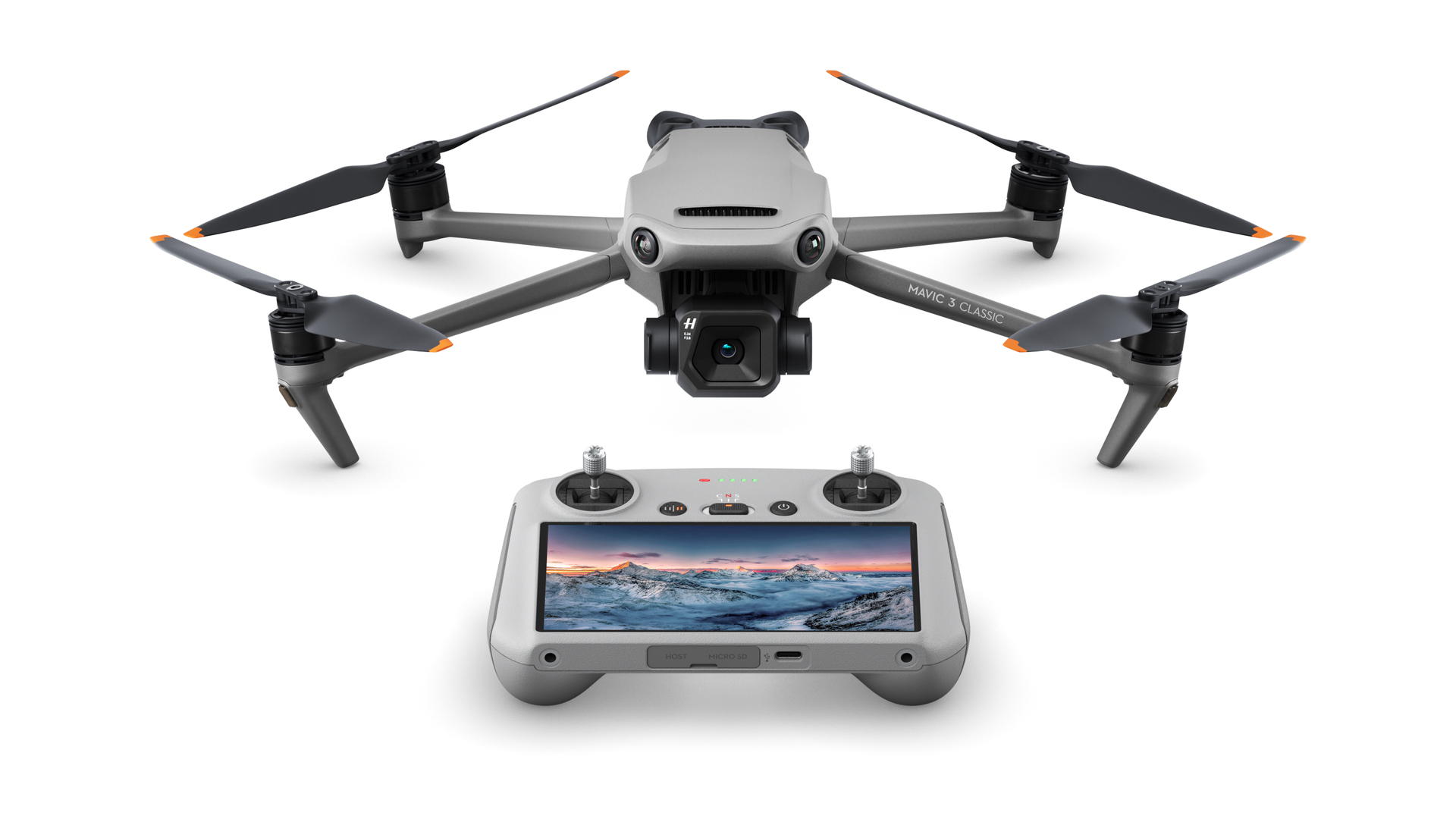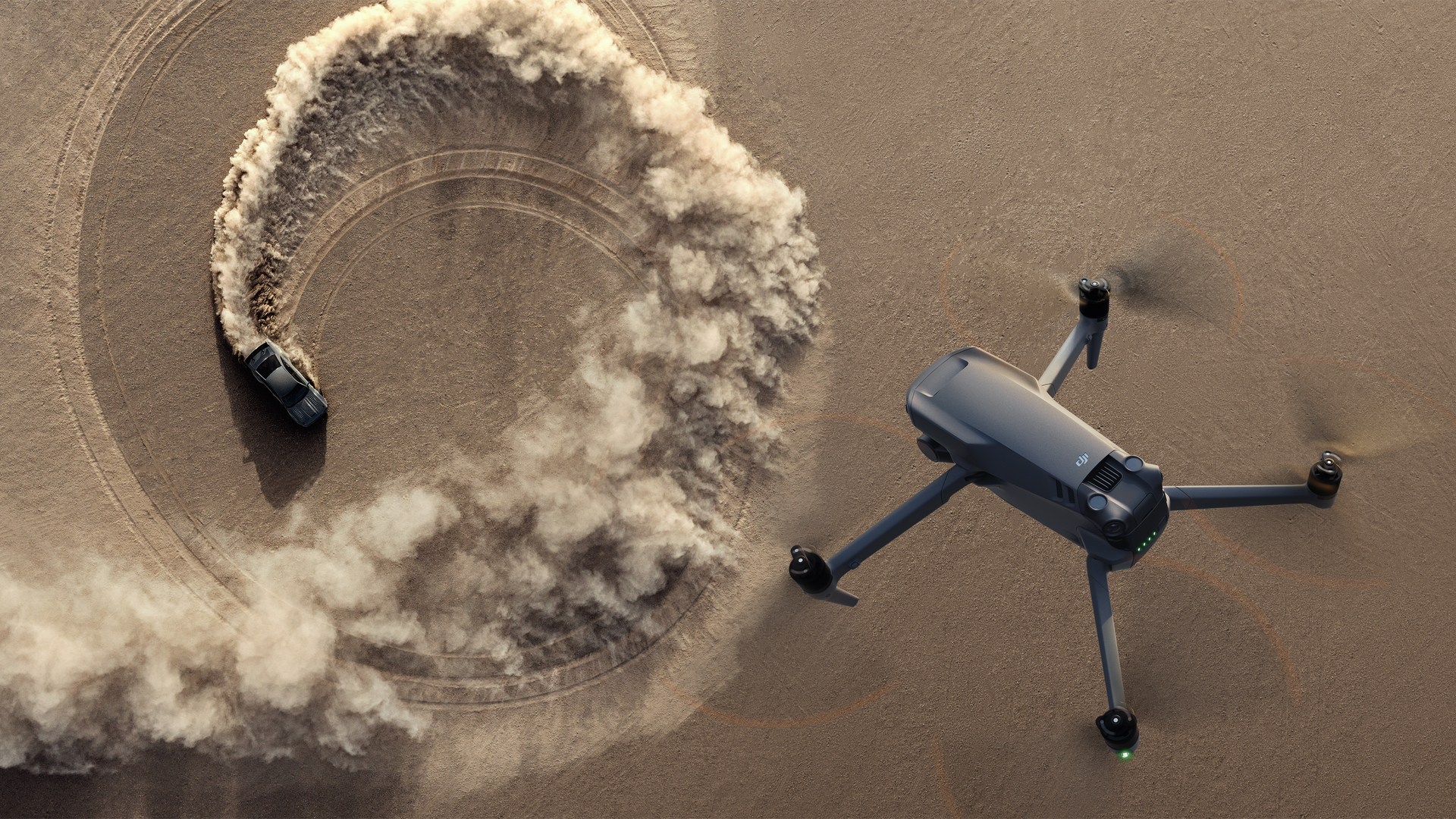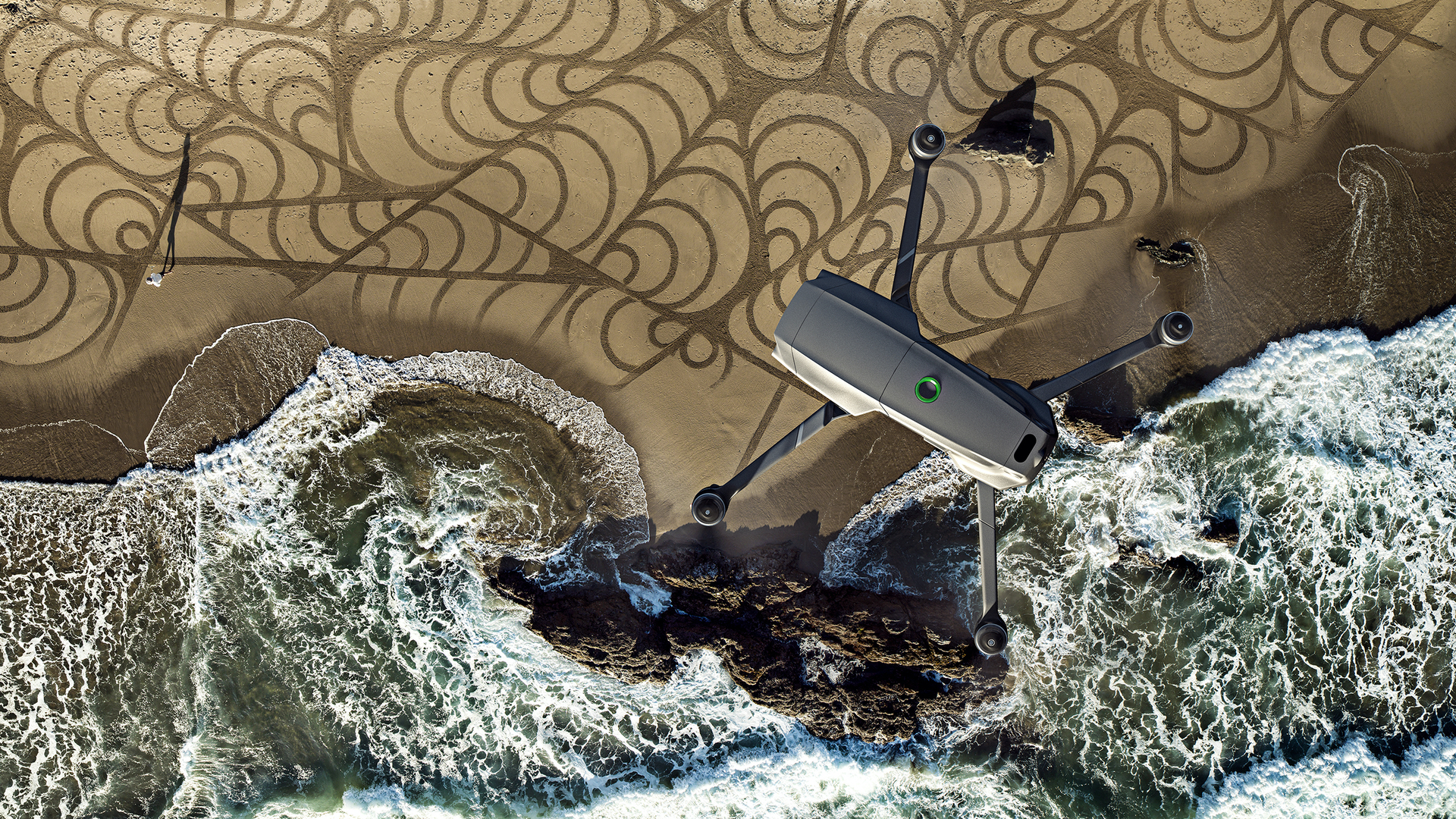

The UK's current drone regulations came into force in December 2020, and they affected the pilots of every camera-carrying drone from 250g and upwards. However, we should add that there is a new set of 'drone type' classifications that come into force on the 1st January, 2023 and you can read about them below.
The existing regulations include a requirement for pilots to have Flyer and Operator IDs for certain drones, as well as passing a Flyer and Operator ID theory test (don't panic – the basic test involved for consumers isn't too taxing).
The registration requirements for drones and model aircraft relate to all drones with a camera fitted, even those under 250g. So that means you now need some kind of permit to fly pretty much all the drones in our best drone and best cheap drone buying guides, including the dinky sub-250g DJI Mini 3 Pro and Autel Evo Nano+.
However, the new regulations don’t apply to drones under 250g that aren’t equipped with a camera, since they are considered toys (most of the models in out best kid's drone guide fall into this category). This means that you can buy that toy drone from Amazon for your child, but not the tantalising one with a camera on board – unless you apply for a registration on your child’s behalf.
The UK’s drone regulations are incredibly confusing, so we've put together this guide to hopefully help make things a little clearer, and help you figure out whether you need a drone Flyer or Operator ID or both, and whether you need to take a theory test before you can fly in 2023.
Note, this legislation applies to consumers and commercial drone users in the UK and, to some degree, Europe. America, and all other countries outside of Europe, have their own regulations, which won't be covered here.
In the US? Take a read of the US drone rules and regulations.
Get all the latest news, reviews, deals and buying guides on gorgeous tech, home and active products from the T3 experts
- For more info, check out T3's guide to how to buy a drone
New for 2023: Drone type classification

The new DJI Mavic 3 Classic is the first drone to be issued with the new C1 classification
Before we get down to the nuts and bolts of the main regulations, we should let you know that the CAA has just released a new set of amendments that affect all drones from 1 January 2023.
According to the CAA: ‘from 1 January 2023, new drones will have to meet a set of product standards. These will be classed from C0 to C4, based on the weight and capability of the drone, and will determine how and where you can fly.’
For the record, these are the new product classifications:
• Drones classed C0 or C1 can be flown in the open A1 sub category
• Drones classed C2 can be flown in the A2 or A3 sub category, but if flying in ‘A2’ you must pass the A2 theory exam (A2 Certificate of Competency or ‘A2 CofC’)
• Drones classed as C3 and C4 can only be flown in the A3 sub category
Until January 2023 if your drone doesn’t have a class marking, you may fly it in the following categories:
• Drones under 250g can be flown in the A1 sub category
• Drones less than 2kg can be flown in A2 sub category, but you must keep at least 50 meters away from people and pass the A2 theory exam (A2 Certificate of Competency or ‘A2 CofC’). If you have not passed the A2 theory exam, you may only fly these drones in the A3 subcategory.
• Drones of 2kg or greater may only be flown in the A3 subcategory, ie fly far from people.
Now this is where it gets particularly confusing, especially if you have owned a drone for years or bought one without a C0, C1, C2, C3 or C4 classification (it is usually stamped on a prop arm). The CAA refers to most current drones with a classification as ‘Legacy’ drones and they are allowing the word ‘legacy’ to apply to any drones that haven’t been fitted with a product classification to continue to fly until 1 January 2026. What happens beyond then is anybody’s guess.
The main problem at the moment is that current owners of, say, the new DJI Mavic 3 Classic have a conundrum on their hands. According to DJI’s newsroom ‘the Mavic 3 Classic has been granted the world’s first C1 EU-type examination certificate for drones under the new European Drone Regulation’. But we’re not in the EU so you can see where this is going.
In this regard, the CAA’s website currently says that after 1 Jan 2023, ‘you can continue to fly a ‘legacy’ unmarked drone in the following categories: drones under 250g can continue to be flown in the A1 sub category; all other drones must only be used in the A3 sub category.
This means that if your DJI Mavic 3 Classic has a C1 marking on the side, you will be able to continue as you would when flying in the A1 Open Category. But if you bought a Mavic 3 Classic without a C1 classification mark (say before DJI had time to print its early run), you will be restricted to flying in the A3 category and that means ‘flying in areas free from people and a 150m horizontal distance or more away from properties.’ In other words, you may be restricted to only flying in open countryside and not in most urban areas since it is nigh on impossible to have your drone remain 150m from people in any built-up area. Let’s hope the CAA clarifies this confusing amendment at its earliest convenience.
Now that we’ve got the very latest regulations out of the way, here’s everything else you need to know about the permissions required to fly a drone in the UK.
UK Drone Regulations 2023: In Brief

You'll be pleasantly surprised where you can legally fly a drone under 250g with only an Operator ID
Want to cut straight to the chase? These are the UK drone regulations in a nutshell, according to the CAA.
You must have two IDs in place before flying most drones or model aircraft outdoors in the UK:
• Anyone who will fly a camera drone above 250g in weight must pass a theory test to get a flyer ID
• The person or organisation that owns or is responsible for the drone or model aircraft must register for an operator ID
WEIGHT REQUIREMENTS:
• Toy drone below 250g – No Flyer or Operator IDs required
• Drone below 250g (not a toy - no camera) – No Flyer or Operator IDs required
• Drone below 250g (not a toy - with camera, like the DJI Mini 3 Pro) – Only an Operator ID required
• Drone weighing 250g and above - Both Flyer and Operator IDs required
According to the CAA, your drone or model aircraft is likely to be a toy if:
• the manufacturer or store you bought it from describes it as a toy
• you bought it from a toy department or retailer
•it is marked as suitable for below age 14 or a younger age group
•it was advertised or packaged to attract children
Where you can fly a sub-250g drone with a camera attached
Since many drone pilots have opted for drones with cameras in the lightweight sub-250g category, it’s good to know that, according to the CAA, you can legally ‘fly closer to people than 50m and you can fly over them’ and ‘you can fly small drones and model aircraft that are lighter than 250g in residential, recreational, commercial and industrial areas’.
This means you can legally fly over cities, towns, villages, housing estates, schools, tourist attractions, sports facilities, beaches, parks, shopping centres, business parks, factories, docks and rail and transport hubs if using a sub-250g drone like the Autel Evo Nano or DJI Mini 3 Pro and you have an Operator ID (£9, renewable annually). However, you must always remember to fly safely and within line of sight of your drone at all times. And never fly above the legal limit of 400 feet, which is plenty high enough for capturing sensational aerial footage.
Despite the CAA’s leniency regarding flying in the above areas, it’s absolutely paramount that you don’t do anything stupid like buzzing people or hovering over private gardens. This is the kind of activity that ruins a great hobby for the rest of us.
Finally, it stands to reason that you must always ‘stay well away from airports, airfields, spaceports and aircraft’ or five years in prison beckons.

UK drone regulations 2023 in detail: Flyer and Operator IDs
The current legislation basically involves requesting a Flyer ID and Operator ID. According to the CAA, there are two requirements and you may need to meet both or you could be fined or worse, sent to prison.
- If you’ll be flying the drone, you must pass a theory test to get a Flyer ID
- If you’re the owner of a drone or model aircraft, you must register for an Operator ID
- You must be 18 or over to get an Operator ID. According to the CAA, ‘if you’re younger than 18 and you own a drone or model aircraft, you must ask your parent or guardian to register for an Operator ID.’
- The Flyer ID is free and is valid for five years. The Operator ID costs £9 and needs to be renewed every year
- Both IDs will be emailed to the recipient

UK drone regulations 2023: Flyer and Operator ID theory Test
In order obtain your Flyer and Operator IDs, you’ll need to sit an online multiple choice theory test – 40 questions – and reach a pass mark of 30. The questions aren’t too taxing but you should at least read the Drone and Model Aircraft Code beforehand. Also be sure to read the exam questions carefully! You can take as long as you like but best not pause for more than 90 minutes or the test will time out. Don’t worry if you fail because you can sit the exam as many times as you like.
Once you’ve passed this test, you’ll be issued with two IDs. You must attach the Operator ID to any drone you’re flying.
You can read everything about the registration process on the CAA website.
These are our favourite camera drones

- DJI Mini 3 Pro review
- Autel Evo Nano+ review
- DJI Air 2S review
- DJI Mavic 3 review
- Autel Evo Lite+ review
Drone regulations: Categories of drone and model aircraft

Once you've got your Operator and Flyer IDs, don’t make the mistake of thinking you can now fly anywhere you like – the CAA (Civil Aviation Authority) has also created a series of Classes and these need to be strictly adhered to.
The basic Flyer ID allows drone pilots to fly in the Open A1 (fly over people) and A3 (fly far from people) sub-categories which are considered to pose the least risk to the public and property. However there is also an A2 which allows you to fly close to people, but more on that below.
Basic Open A1 and A3 rules
- Drones must have a take-off mass of less than 25kg
- Always keep the drone below an altitude of 400 feet
- Keep the drone at least 50m from people you don’t know though you can fly closer to friends and family
- If your drone is below 250g in weight (like the DJI Mini 3 Pro and the Autel Evo Nano series), you can fly closer than 50m to people you don’t know and even fly over them – with care
- You cannot fly over crowds
- Keep at least 150m away from residential, recreational, commercial and industrial areas if flying a drone over 250g. That’s pretty much every decent drone on the market bar the remarkable little DJI Mini 3 Pro and Autel’s Evo Nano series.
- FPV flight must be performed within visual line of sight
- The FPV pilot must be accompanied by a spotter who is alongside the pilot. The spotter must not use any form of aided vision like binoculars
- Absolutely stay well away from airports of any size
Open A2 Certificate of Competency

Now this is where it becomes even more confusing, not least because the subcategory titles don’t flow in a logical order. As we said above, the A1 and A3 subcategories come with a lot of restrictions, yet there’s another subcategory – A2 – that allows flying in areas not covered by the A1 and A3 subcategories.
To fly in the Open A2 subcategory, the pilot must hold an A2 Certificate of Competency (A2 CoC) issued by the CAA. The A2 CoC applies to drones with a take-off mass, including any payload, of less than 2Kg, ie the vast majority of consumer drones. You can arrange to get your A2 CoC qualification via a number of online courses which we’ll list below.
The single best thing about this new A2 regulation is that there is no longer any differentiation between 'leisure' and 'commercial' drone flights, which means you could start earning money with your drone.
The CAA-approved A2 course itself consists of four online modules – basic principles of flight, operating in congested areas, avoiding collisions, etc – and a multiple-choice theory exam of 30 questions. The A2 CoC qualification is valid for five years. The cost of the A2 course ranges between £149 and £299.
Basic Open A2 rules
- Permission to fly within Residential, Commercial, Industrial and Recreational areas. This means being allowed to fly from your own private garden
- You cannot fly within 50m horizontally of any uninvolved persons but you can fly over them at a safe distance
- You can fly your drone for commercial purposes

Specific and Certified categories
That’s not the end of it. There are two other categories that most likely won’t apply to the vast majority of drone pilots. According to the CAA, the Specific category is for moderate-risk flying and the Certified category is for high-risk, complex flying.
CAA info on the Specific category
CAA info on the Certified category
For more info, we'd recommend the following A2 CoC courses:
Why do we have drone regulations?

If you’ve ever tried flying a remote controlled helicopter, you’ll know how impossibly difficult it is to keep in the air without it crashing into the ground or flying off into a tree. That all changed in 2010 when Parrot launched the AR Drone, a remote controlled four-bladed helicopter-type aircraft that almost flew itself. Soon after, a Chinese company called DJI pulled the original Phantom Vision out of the hat, a drone with a camera fitted to its nose and the world of aerial videography and photography literally took off. Before long, everyone was scrambling to get hold of a camera carrying drone so they could take their own amazing photos and videos from a vantage point previously only possibly from the seat of a full-sized helicopter.
As drone popularity increased tenfold, so did instances of reckless behaviour involving drones being flown in a dangerous fashion near airports, over private property and near crowds. And, as is the way with all things when stuff gets out of hand, UK and European authorities stepped in to put a stop to it and create a tranche of drone legislations that affect both consumers and commercial users in both the UK and Europe. America – and indeed all other countries outside of Europe – have different regulations, so if you're visiting this article from outside of Europe, or planning on travelling with your drone, make sure you do your own digging into the local laws.
Now you know the ins and outs of UK drone laws, head straight over to our comprehensive guide to the Best Camera Drones you can buy in 2023
Derek (aka Delbert, Delvis, Delphinium, Delboy etc) specialises in home and outdoor wares, from coffee machines, white appliances and vacs to drones, garden gear and BBQs. He has been writing for more years than anyone can remember, starting at the legendary Time Out magazine – the original, London version – on a typewriter! He now writes for T3 between playing drums with his bandmates in Red Box (redboxmusic).
